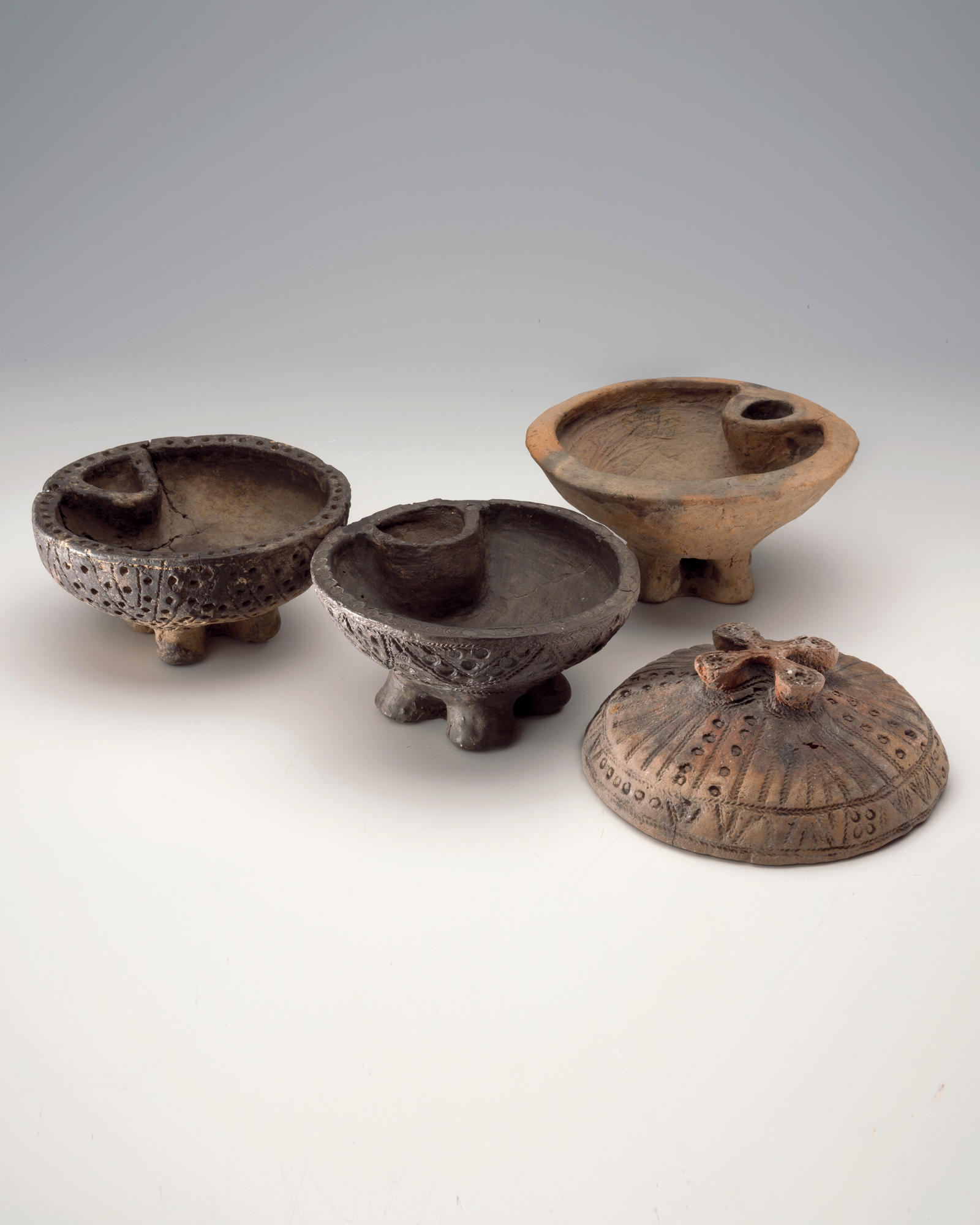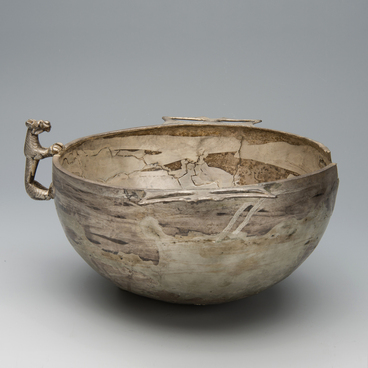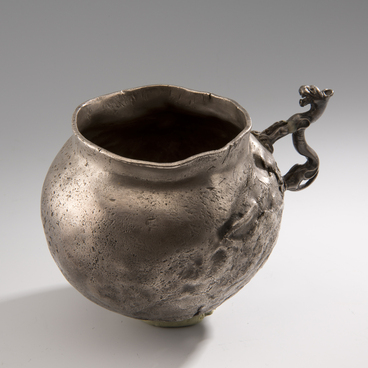Incense burners are cult vessels of the Catacomb culture. This is what they call related cultures of the Middle Bronze Age — the 25-20th centuries B.C. Its representatives inhabited the steppe and forest steppe area from the Urals and the North Caucasus to the lower Danube. Archaeologists found incense burners in mounds along the entire left bank of the Don, as far as Kuban and Kalmykia.
Ritual vessels have an intricate shape: in the main bowl there is a small section, and it has a sculpted leg. The bottom of the incense burner is decorated with magnificent ornament. In burial sites, heaters were replaced by incenses. Prior to the appearance of ritual crockery, fragments of broken vessels were used in rituals, charcoal was put in them and fired. Incense burners would also be filled with coal, but sometimes open fire was replaced by a bright mineral paint that was the symbol of the flame. In some cases, incense burners were put upside down, apparently it was for a particular rite.
Ritual vessels have an intricate shape: in the main bowl there is a small section, and it has a sculpted leg. The bottom of the incense burner is decorated with magnificent ornament. In burial sites, heaters were replaced by incenses. Prior to the appearance of ritual crockery, fragments of broken vessels were used in rituals, charcoal was put in them and fired. Incense burners would also be filled with coal, but sometimes open fire was replaced by a bright mineral paint that was the symbol of the flame. In some cases, incense burners were put upside down, apparently it was for a particular rite.




